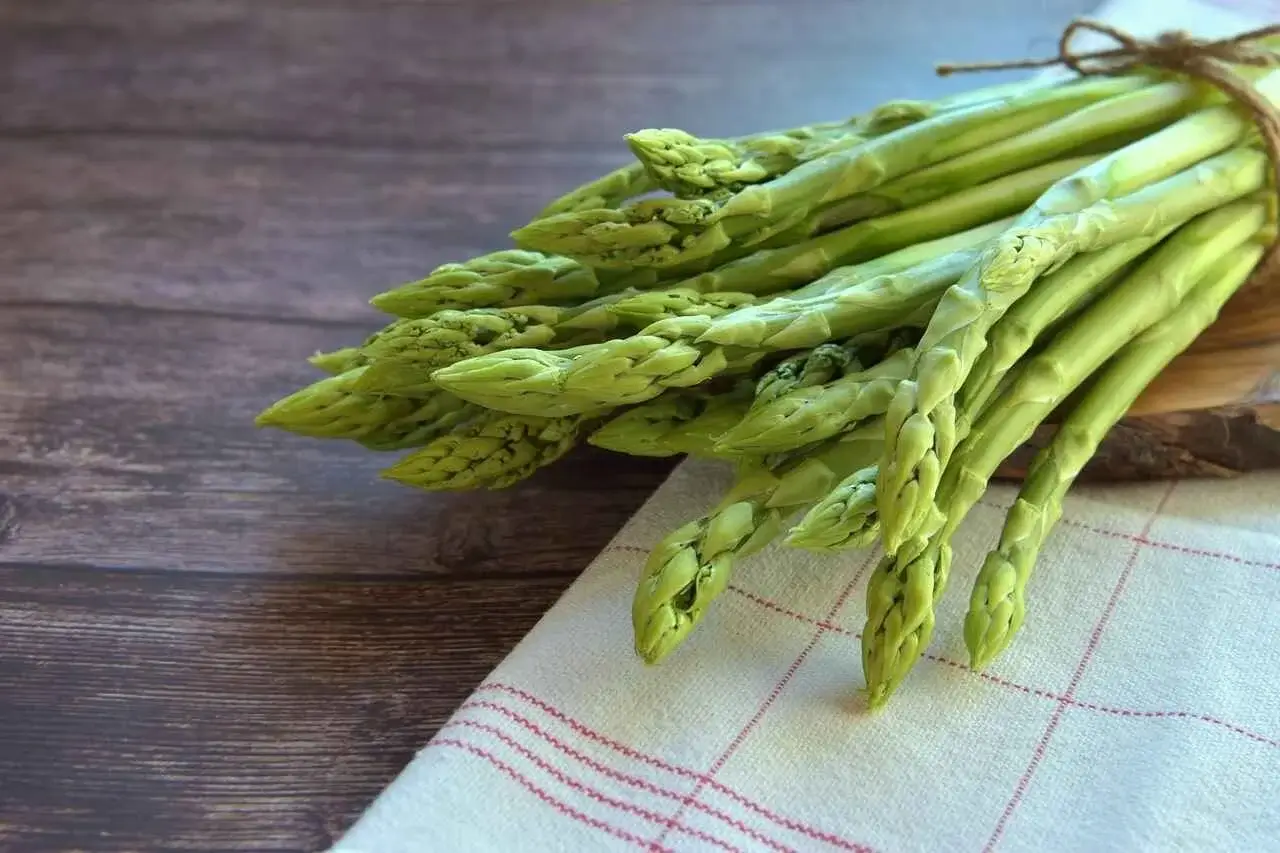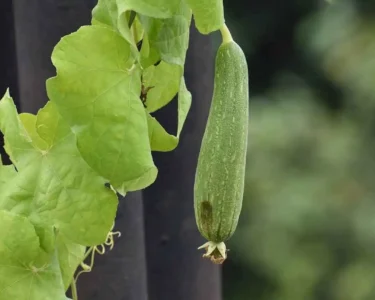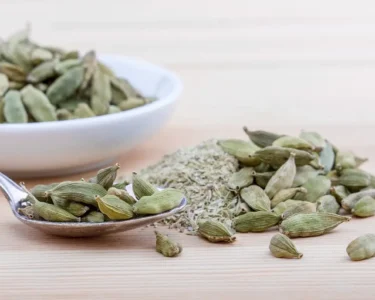Welcome, avid readers!
Are you wondering about Asparagus and asparagus seeds? Do you want to know how to grow asparagus from seeds? Or do you want to know how asparagus has positive effects on your physical and sexual health? Then you are at the right place. Your search ends here
In this article, I will explain about Asparagus and Asparagus seeds as well as how to grow Asparagus from seeds. Not only that I will also tell you the uses and benefits of Asparagus on our physical and sexual health and how much they add to your garden.
So, let’s begin our journey!
What is Asparagus?
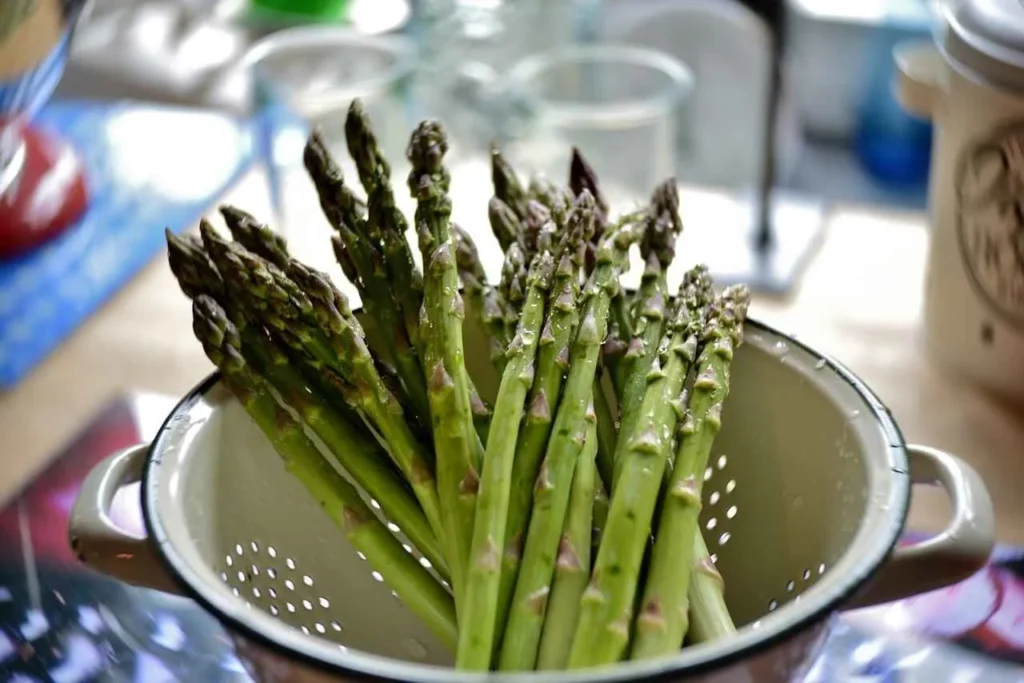

Asparagus (Asparagus officinalis) is a flowering plant species of the genus, Asparagus. It is most commonly cultivated for young shoots which are used as a vegetable when being harvested.
Here are some key points about Asparagus:
| Name | Asparagus |
| Scientific Name | Asparagus officinalis |
| Genus | Asparagus |
| Appearance | Tall, Fern-like shoots and feathery, needle-like leaves |
| Height | 1.5-2 meters (5-6.5 feet) |
| Seed Shape | Small, round shape |
| Seed Color | Dark brown or black |
| Soil | Prefer nutrient rich, well-drained soil |
| Season | Spring to early summer |
| Edible Part | Young Shoots (Not seeds) |
| Harvest | 2-3 years before 1st harvest |
What do asparagus seeds look like?
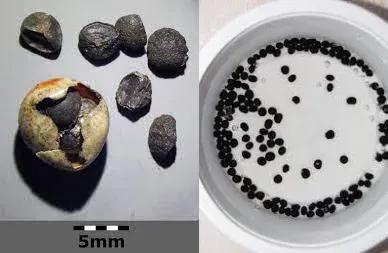

Asparagus seeds refer to small round seeds that the asparagus plant (Asparagus officinalis) bears or develops.
Appearance: These seeds are small, round or slightly oval shaped with harder outer cover. Their color varies from dark brown to black depending upon different species. They are about the same size of a peppercorn or even slightly smaller.
Propagation: The seeds are commonly use for the purpose of developing new plants or for reproduction. Directly sown, though this usually requires starting the seeds in warm water, or started earlier in pots and then transplanted.
Click to read more: Red Clover Seed | Benefits, Uses and How to Grow
Types of Asparagus
There are many types or varieties of Asparagus based on its colour, or alternatively, the methods used for its cultivation.
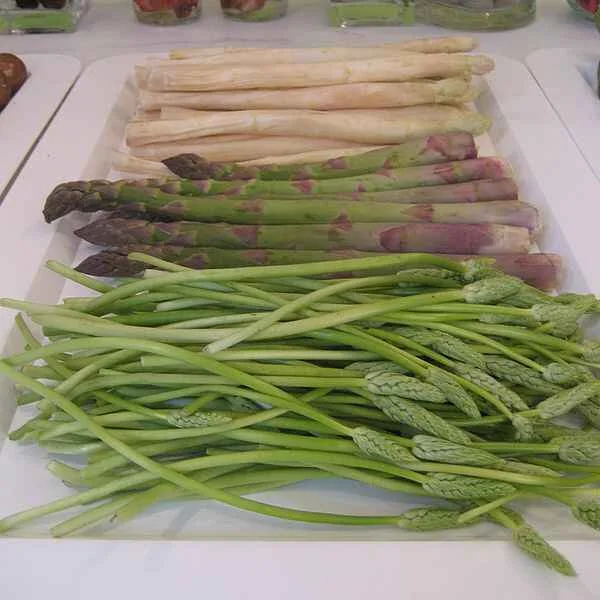

Following are the main types of asparagus:
Green Asparagus:
- Description: Among the types, green asparagus is the most popular one and the one that is most encountered by customers. The colour of its spear is green with a bright touch throughout the leaf.
- Flavor and Texture: Fresh green asparagus tender with slightly sweet and nut-like flavor when it is properly cooked.
- Cultivation: They are grown in sunlight, and this assists in the formation of chlorophyll, thus being green in color.
White Asparagus:
- Description: The white asparagus is grown by covering the spears from sunlight during growth, so they do not produce chlorophyll.
- Flavor and Texture: White asparagus is relatively more tender and milder in taste than green asparagus. It has similar flavor to that of nuts, and its texture is soft but firm.
- Harvesting: These are taken from the fields when they are still buried under mounds of soil or under black covers, which is why they are so pale.
Purple (Wild) Asparagus:
- Description: Purple asparagus is comparatively newer and the Spears are purple in color.
- Flavor and Texture: Purple asparagus has a similar taste like the green one but is considered sweeter and richer in a fruity taste. It has a tender texture.
- Nutrition: Purple asparagus contains anthocyanins which are antioxidants that give it the purple hue and are also assumed to possess some degree of health benefits.
In general, the properties of each type differ in terms of taste, colour and texture. This creates a broad range of possibilities for preparing the vegetable.
How to Plant and Grow Asparagus from Seed?
It has become my thumb rule to always to sow asparagus from seed. Even though it often takes several years before harvest time for actual spears but in this way, it is an interesting as well as rewarding process.
Here are the steps you can follow to grow asparagus from seed:
1: Seed Selection and Preparation
- Selecting Seeds: Selection of appropriate seeds is very important before beginning the process. It is appropriate to buy seeds from a reputable store or collect seeds from mature plants if accessible.
- Seed Preparation: Mature Asparagus seeds have a hard coat around them that can delay seed germination.
- Scarification: You can scarify the seeds by nicking or by rubbing gently with the sand paper. This will allow the water to penetrate the seed coat, thus increasing the chances of germination.
2: Planting Seeds
- Timing: To plant the asparagus seeds, you have to sow them indoor about 10 to 12 weeks before the last frost date in your region. This helps them germinate and grow before being transplanted to the garden or outdoor space of your choice.
- Container: You need to plant the seeds in seed trays or small pots with the help of a good seed-starting mix which drains well. Make sure that the containers are drilled with drainage holes to release excess water.
- Sowing Depth: Plant the seed 1/4 inch below the soil surface. This should be placed around gap of 1-2 inches in between them.
- Moisture: Water the plants moderately but ensure that you do not drown them. One can put a plastic wrap or place a transparent humidity dome over the containers to maintain moisture until the seeds sprout.
- Temperature: Asparagus seeds require warm soil to grow. Accurate soil temperature should be around 50-75°F (10-24°C).
3: Germination and Seedlings Care:
- Germination Time: These seeds germinate in approximately 2-6 weeks if proper conditions are provided.
- Light: After germination the seeds require light, but not necessarily intense light. Natural light or artificial light such as grow lights on a windowsill or some other convenient place can be used for providing seedlings with the necessary amount of light.
- Thinning: Prune out the weak seedlings while leaving only the healthy ones. Seedlings should be 2-3 inches apart so that they can grow efficiently which
4: Transplanting Outdoors
- Timing: When they are 8-12 weeks old and have developed many sets of true leaves, the seedlings should be transplanted outdoors. You should do this only when the threat of frost has passed in your area and temperature has warmed up.
- Site Selection: Seedlings should be planted in sunny and open area. These plants grow best in a slightly acidic soil of pH (6-7.5)
- Soil Preparation: Before transplanting the seedlings, prepare the soil by digging and applying compost or manure (well rotten) for better fertilities and drainage.
- Planting: The next step is to dig a small hole of about 6-8 inches deep. Place the roots of each seedling in the hole. Spread the roots completely for proper soil touch. Separate the seedlings by planting them 12-18 inches apart.
- Covering Roots: It is recommended to gradually fill of the trench with soil. Make sure the roots are buried but remember to keep the shoots exposed.
5: Care and Maintenance
- Watering: Water the seedlings periodically. Make sure that the soil is moist at all times especially when the weather is dry for proper root formation.
- Weeding: Remove the weeds around the seedlings. This helps the seedlings to avoid competition for water and nutrients.
- Mulching: Add Mulch around the plants to create a barrier around them. This will help in controlling moisture to counter the high temperatures as well as weed growth.
- Fertilizing: This vegetable is a heavy feeder. Apply compost or an equable fertilizer to the side of the plants in spring and early summer.
- Patience: It takes its time to grow. It takes almost 2-3 year before one can harvest the spears that grow from these plants. While doing this, some of the spears should be allowed to grow and spread to enhance the formation of a strong root system.
When done this way, you will have a perennial crop of this exceptionally sweet and beneficial vegetable in your garden once the plants start growing shoots.
When to plant asparagus seeds?
Finding the right timing is crucial for successful germination and healthy growth of asparagus plant.
Here are the general guidelines for when to plant asparagus seeds:
A) Indoors (for transplanting outdoors):
Asparaguses are cold sensitive plant. Their seeds are generally planted indoors few weeks before the last frost date especially in areas with smaller warm season.
- Timing for starting seeds indoors: Plant seeds in seed trays or pots about 10-12 weeks before the last frost in your zone. This makes it possible for the seeds to start developing into seedlings that have strong and healthy stems before they are planted in the open ground.
B) Outdoor sowing (direct seeding):
In the areas where winter is not severe or where asparagus grows well, then direct sowing of seeds is possible in the main field.
- Timing for direct seeding: Plant seeds in the garden when soil temperatures have moderately warm after the last expected frost of the season. Soil Temperature between 50-70°F or 10-21°C – seems to be ideal for germination to commence.
| Place | Timing | Frost Date |
| Indoor | 10-12 weeks | Before the Last Frost Date |
| Outdoor | 1 week or when Soil Temperature is (50-70°F or 10-21°C) | After Last Frost Date |
Uses of asparagus seeds:
Propagation: These seeds are mainly used for planting new asparagus plants.
Variety: Cultivating own asparagus gives the opportunity to select different varieties of your own choice
Asparagus Benefits and Uses (Vegetable)
Being one of the most preferred vegetables in the market, asparagus also has nutritional value, added to the fact that it has a tasty flavor.
Here are some key uses and benefits of asparagus:
Culinary Uses:
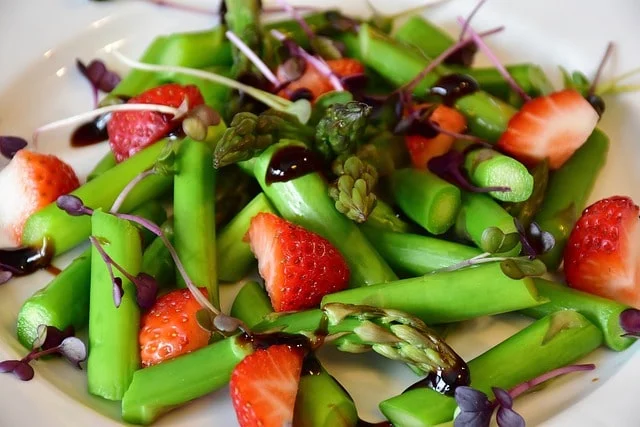

Versatility: Asparagus can be used in a number of methods for cooking. Some of these methods include steaming, grilling, roasting, sautéing, or even consumption in raw form by being added in salads.
Flavor Profile: It has a taste which though a bit sweetish and having a nutty feel in the mouth. It is quite versatile and blends fairly well with many foods and preparations.
Ingredient in Dishes: Asparagus is used not only in appetizers, second courses and side orders, but also for supper, soup, salads, and even for frying.
Health Benefits:
Nutrient-Rich: Asparaguses is low in calories but contains essential nutrients as outlined below:
- Vitamins: The reservoirs of the four amino acids A, C, E, and K.
- Minerals: In particular, it is possible to arise to low level of folate, potassium, and phosphorus.
- Dietary Fiber: Supports the digestive system and have positive impacts on gut health.
Antioxidant Properties: It has several antioxidants like Vitamin A, C, E and glutathione which work by blocking free radicals into the body and decreasing the oxidative damage.
Digestive Health: These vitamins and nutrients are also combined with dietary fibers that help in proper digestion. It helps maintain a healthy digestion system by stimulating peristaltic movement of the gut and acting as a good source of food bacteria in the stomach.
Heart Health: It is virtually devoid of cholesterol and salt but contains appreciable amounts of potassium, which is critical in hypertension. The presence of folate is good for the heart since it decreases homocysteine.
Anti-inflammatory: Asparagus have anti-inflammatory nutrients that can assist lower the possibility of creating chronic ailments that may be due to inflammation.
Diuretic Properties: Asparagus is known to possess natural diuretic properties that assist in the eliminating all waste products, particularly water and salt, from the body, hence helping the liver and kidneys.
Other Benefits:
Weight Management: Asparagus has a very low calorie density and a high density of nutrients. This makes it a food that can beneficial for those who are observing their weight.
Bone Health: Like all other green leafy vegetables, asparagus also provides the body’s bones with the necessary nutrition through vitamin K which assists in calcium absorption and bone mineralization.
Asparagus benefits for Women Health
Pregnancy Nutrition: It has folic acid or vitamin B9 which is very important for fetal development during pregnancy, and might reduce the risks of neural tube.
Asparagus benefits for Men Health
Heart and Blood health: Elements in asparagus help dilates the blood vessels. Thus increasing circulation of blood in the body.
Sexual Health: It increases the flow of blood to pelvic area especially the white asparagus. Thus helping men in keeping their erection for longer period.
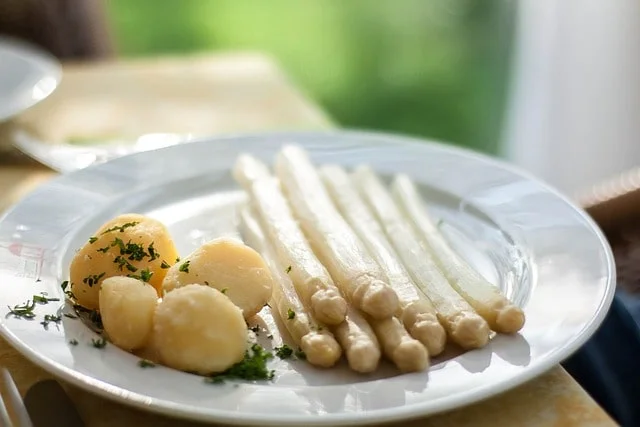

Click to read more | Cardamom Seeds | Uses, Benefits and Side Effects | A Complete Guide
Are asparagus seeds edible?
Asparagus seeds cannot be considered as the edible due to their hard outer layer, bitterness and the fact that they look unappetizing. However, they are equally important when it comes to the reproduction of the plant.
Although, the seeds are not fully consumable, but the plant produces young shoot which referred to as spears, are actually fully consumable and are nutritious. These shoots are highly valued for cooking purposes because of their texture and unique flavor. These shoots are harvested when they are young and not matured into leafy branches. .
Can you eat asparagus fruit? Are asparagus berries poisonous?
Yes. Berries produced by asparagus plant are highly poisonous. Even if eaten in a small amount, they could lead to vomiting. Be aware and keep them away, especially from the childrens reach if you are considering growing asparagus in your garden.
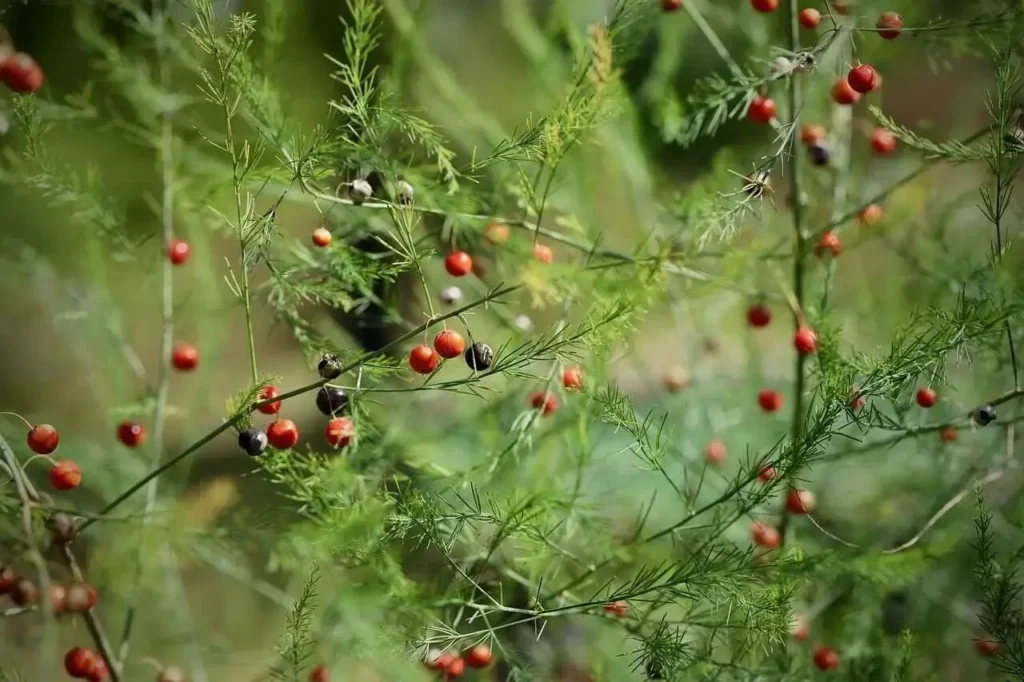

Asparagus Seeds for Sale
In today’s fast world, you can find many things as long as you have a fast internet connection and a mobile phone. There are many ways and sources where you can find these seeds for sale.
Here are some places where you can find seeds for sale:
a) Online Seed Retailers:
Some sites that sell many seed varieties include Burpee, Baker Creek Heirloom Seeds, Seed Savers Exchange.
These sites also contain a wealth of information on the various types of asparagus as well as tips on growing them and customers reviews.
b) Local Garden Centers:
Many of the local garden centers and nurseries specialize in rare varieties. You can easily find one online or in your local area, especially when the seeds, for instance, are sown indoors in spring.
When buying seeds, the best option is to personally go to the local garden center so you can have a first-hand look at the seeds you intend to plant. These stores also provide advice regarding the planting and maintenance of plants.
c) Seed Catalogs:
Sending a request about the seed catalog to reliable companies can give you access to many different types of asparagus seeds.
The process of cataloging also present additional information about the seed varieties contained in catalogue, such as general descriptions of the seeds, profile of the seeds, and sometimes history of the given seeds.
d) Farmers’ Markets and Agricultural Shows:
In some countries and especially during the farmers’ markets or agricultural shows, you might find bonafide sellers of seeds.
This can also be a good chance to invest in region-specific Varieties and potentially rare Heirloom seeds if these are needed.
e) Online Marketplaces:
Amazon and eBay are other places to browse through lists provided by various sellers. One should consider taking his or her time to check for the statuses of the sellers to be sure he or she is dealing with the right person.
While buying asparagus seeds, certain parameters include the climate of your area, color and type of asparagus for production that you want either green, white, purple etc. And either you want to begin from seed or buy asparagus crowns which are young plant.
Conclusion:
If you have any question regarding asparagus and asparagus seeds or you want us to write about your plant of interest, you can comment down below to let us know.
Please also comment if you found this blog helpful in any regard. This will boost our morale a lot higher than you can imagine. Thank you for reading and visiting our site!


